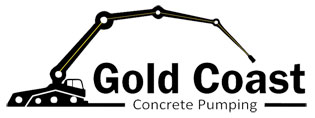Why Concrete Pumping is the Backbone of Today’s Building Projects
In the modern construction world, projects demand speed, accuracy, and efficiency. Relying on old methods like wheelbarrows, cranes, or heavy manual labour to pour concrete often leads to delays, extra costs, and unnecessary mess. That’s why concrete pumping has emerged as a revolutionary solution, transforming how concrete is placed on-site.
Concrete pumping has become the backbone of modern building projects because it saves time, reduces labour costs, and delivers accuracy in places where traditional methods struggle. From residential driveways to massive commercial developments, concrete pumping ensures construction work gets done faster and with better quality.
In this blog, we’ll explore why concrete pumping is essential for today’s building projects and why more contractors are choosing it over outdated methods.
- What is Concrete Pumping?
Concrete pumping is the process of using a concrete pump machine to transfer liquid concrete from the mixing truck directly to the exact location where it’s needed. Instead of manually carrying loads of concrete in wheelbarrows, pumps use powerful hydraulics and pipelines to place the concrete quickly and efficiently.
There are two main types of concrete pumps used in construction:
- Boom Pumps: These are mounted on trucks with a robotic arm (boom) that can place concrete at great heights or distances. Ideal for large-scale projects like bridges, tall buildings, or commercial slabs.
- Line Pumps: These pumps use flexible hoses and are perfect for smaller projects like residential driveways, footpaths, and backyard renovations.
Both options make it easier to get concrete into hard-to-reach areas without delays or excessive labor.
- The Key Benefits of Concrete Pumping
So, why has concrete pumping become such a vital part of construction today? Let’s break down the main advantages.
✅ Faster Project Completion
Concrete pumps can move large volumes of concrete quickly, which speeds up construction timelines. What would take hours with manual labor can be done in minutes with a pump. This means builders can stick to deadlines more effectively.
✅ Precision Placement
With concrete pumping, the concrete is placed exactly where it’s needed — whether that’s on a high-rise rooftop, around tight foundations, or across long distances. This reduces waste and ensures a smoother finish.
✅ Cost-Effective Solution
Although hiring a concrete pump might sound like an extra expense, it actually saves money in the long run. By cutting down on labor costs, reducing material waste, and avoiding project delays, concrete pumping proves to be highly cost-efficient.
✅ Safer Work Environment
Manual concrete placement can be dangerous, especially in areas with steep slopes or limited access. Pumps reduce the need for workers to carry heavy loads, lowering the risk of accidents and injuries on site.
✅ Versatility in Applications
Concrete pumps are used in a wide variety of projects — from small residential renovations to massive infrastructure developments. This versatility makes them suitable for almost any construction project.
- How Concrete Pumping Shapes Modern Construction
Today’s construction projects are more complex than ever, with taller buildings, tighter deadlines, and more demanding client expectations. Concrete pumping plays a critical role in meeting these challenges.
- High-Rise Buildings: Boom pumps make it possible to deliver concrete to upper floors without scaffolding or cranes.
- Infrastructure Projects: Bridges, tunnels, and highways often require precision placement of concrete in hard-to-access areas.
- Residential Construction: Line pumps are perfect for home renovations, swimming pools, driveways, and patios.
- Commercial Developments: Large concrete slabs, car parks, and warehouses are completed faster with pumps, ensuring businesses can open sooner.
By making concrete placement faster and more reliable, pumping has become the backbone of both small- and large-scale projects.
- Environmental and Long-Term Benefits
Concrete pumping isn’t just about speed and cost — it also supports sustainability in construction. Since pumps reduce waste and require fewer workers to transport concrete, they lower the carbon footprint of a project.
Additionally, the improved placement quality means fewer cracks, repairs, and reworks in the future. Stronger, longer-lasting concrete structures benefit both builders and property owners in the long run.
- Why Builders and Homeowners Prefer Concrete Pumping
Whether you’re a professional contractor or a homeowner planning a renovation, concrete pumping offers peace of mind. Builders prefer it because it keeps their projects efficient and profitable, while homeowners appreciate the clean, fast, and reliable service.
Instead of worrying about delays, messy work, or inconsistent finishes, concrete pumping guarantees a smooth process and professional results every time.
Conclusion
Concrete pumping has transformed the way modern construction projects are carried out. It’s faster, safer, more precise, and more cost-effective than traditional methods — making it the backbone of today’s building industry.
From small residential tasks to massive infrastructure projects, concrete pumping ensures that builders can deliver high-quality results while saving time and money.

